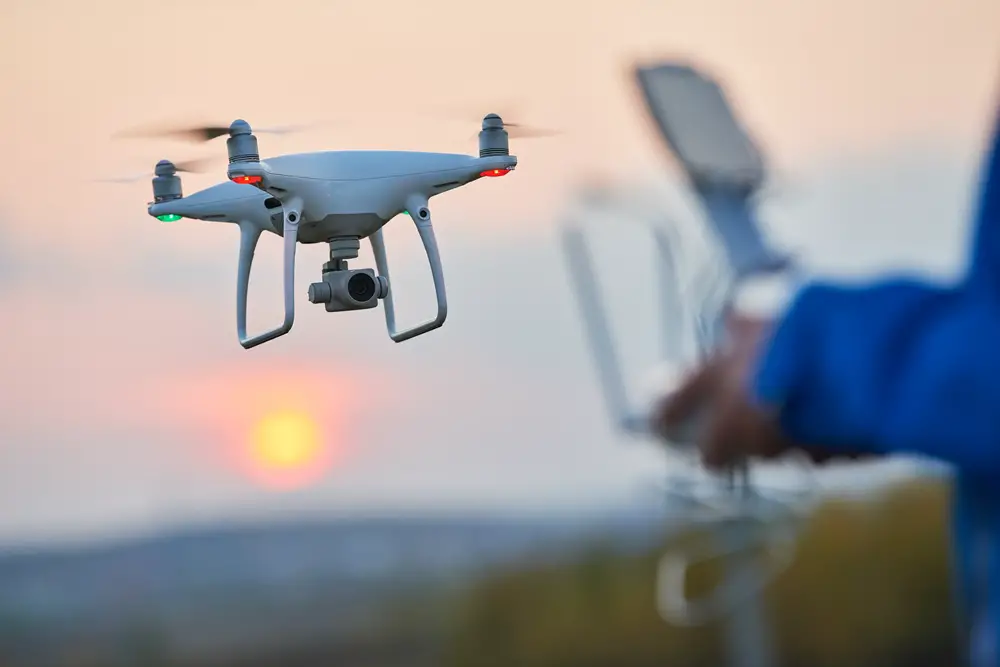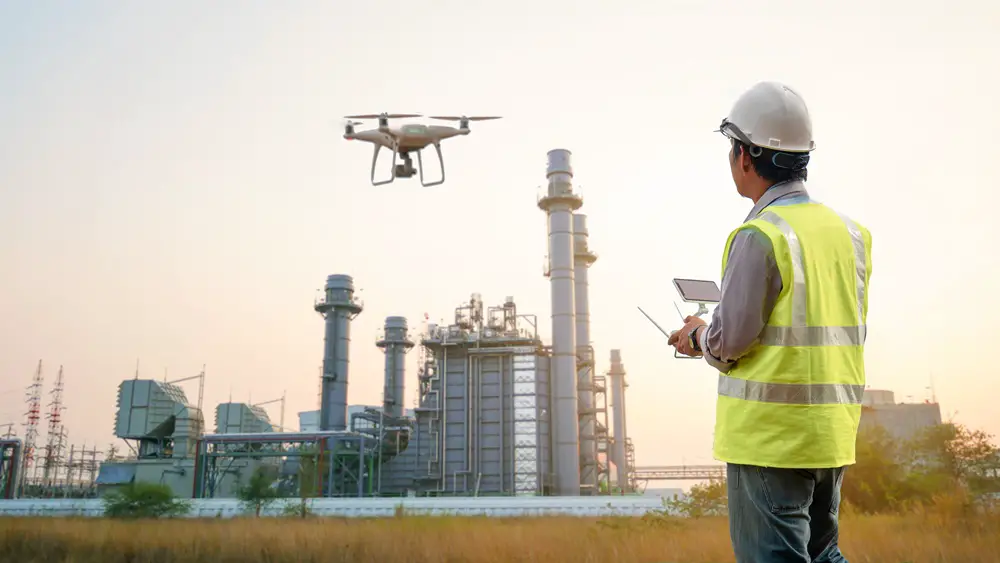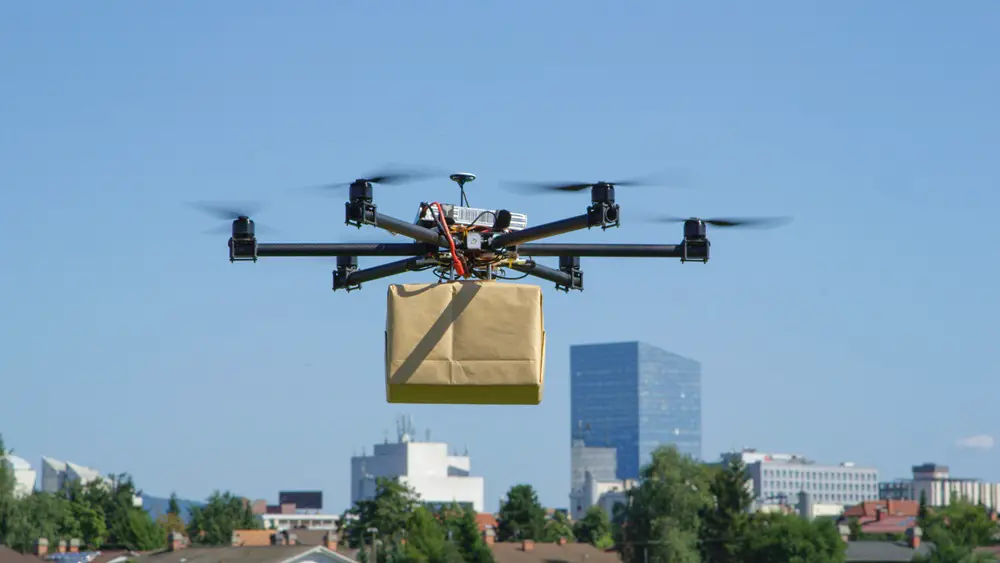In today’s world, where natural calamities are on the rise, the aftermath of these events can leave communities scrambling to pick up the pieces. Among the many challenges faced, restoring critical technology infrastructure, such as internet services and electrical grids, holds paramount importance. This is where drone disaster recovery technology comes into play, offering a set of “eyes in the sky” that can significantly change the game in disaster recovery efforts, providing immediate assistance and insights into the state of critical infrastructure.

The Immediate Impact of Drones
Why drones? Simply put, they can go where humans and traditional methods cannot. In the wake of a disaster, such as a hurricane, earthquake, or flood, responders can quickly deploy drones to survey the damage, providing vital real-time images and data for effective response planning.
Quick Assessment and Action
Drones equipped with cameras and sensors fly over affected areas, capturing detailed visuals that help assess the extent of the damage. This information is crucial for prioritizing response efforts and ensuring that help reaches those who need it most as quickly as possible.
Enhancing Tech Infrastructure Recovery
Restoring Communication Lines
When disasters strike, they impact communication networks among the first. Drones are critical in assessing cell towers and other communication infrastructure damage. By providing a clear picture of the situation, they help quickly restore these essential services, keep affected communities connected, and facilitate smoother coordination of recovery efforts.
Powering Up Again: Electrical Grids
The restoration of electrical power is another area where drones prove invaluable. They can safely inspect power lines and substations, identifying problems like breaks and short circuits without requiring human workers to risk their safety. This action speeds up the repair process and allows for the rapid restoration of electricity to homes, hospitals, and emergency services.

Real-Time Data for Smarter Decisions
Drones’ most crucial benefit is their ability to transmit data in real-time. Decision-makers receive instant updates on the situation, which enables them to decide strategically where to allocate resources most effectively. This agility in decision-making can save lives, reduce suffering, and speed up the overall recovery process.
Planning and Preventing for the Future
But drones’ usefulness extends beyond the immediate aftermath. Planners can also use the collected data to make future infrastructure projects more resilient to similar disasters. This proactive approach is vital in reducing the impact of future calamities on tech infrastructure and the communities that depend on it.
The Human Side of Drone Operations
While drones are technological marvels, the human element truly drives their success in disaster recovery. Operators and response teams work tirelessly, often in challenging conditions, to ensure they effectively use the information gathered by drones. Their dedication and skill make the difference in these critical moments.
Empowering Communities
Beyond the technical aspects, drones also profoundly impact affected communities. They instill hope and reassurance, showing that help is on the way, seeing their plight, and remembering them. This psychological boost can be just as significant as the physical rebuilding process.

The Path Forward
As drone technology continues to evolve, it will play an increasingly significant role in disaster recovery and the restoration of tech infrastructure. With advancements in drone capabilities, such as longer flight times and improved imaging technologies, their ability to aid recovery efforts will only increase.
Collaborative Efforts
The future also holds potential for greater collaboration between government agencies, non-profits, and private companies in utilizing drones for disaster recovery. By working together, these entities can leverage the full potential of drones to make disaster response more efficient, effective, and humane.
Frequently Asked Questions (FAQs)
1) How can drones be used for disaster recovery?
Drones are instrumental in disaster recovery by providing real-time aerial imagery and data. They can quickly survey affected areas, assess damage, locate survivors, and identify hazards such as blocked roads or damaged infrastructure. This information aids emergency responders in planning and executing rescue operations efficiently.
2) What are the benefits of drones in disaster management?
The benefits of drones in disaster management are numerous. They offer rapid deployment, allowing for swift assessment of the situation and identification of critical needs. Drones also reduce risks to human responders by providing remote access to hazardous or inaccessible areas. Additionally, their ability to collect high-resolution data aids in decision-making, resource allocation, and coordination of response efforts.
3) What technologies do drones use in emergency services?
Emergency services equip drones with various technologies, including high-definition cameras, thermal imaging sensors, GPS navigation systems, and communication tools. These technologies enable drones to capture detailed images, detect heat signatures, navigate accurately, and transmit data in real-time, enhancing their effectiveness in emergency response operations.
4) How can drones be used to protect the environment?
Drones play a significant role in environmental protection by monitoring ecosystems, detecting pollution, and conducting wildlife surveys. They can assess the health of forests, coastlines, and wildlife habitats, identify illegal logging or poaching activities, and track changes in environmental conditions such as deforestation or pollution spills. Drones also support conservation efforts by enabling efficient data collection and analysis for informed decision-making.
5) Which is an example of a humanitarian use of a drone?
One example of a humanitarian use of drones is their deployment in delivering medical supplies to remote or disaster-stricken areas. Drones equipped with cargo pods can transport essential supplies such as vaccines, medications, blood samples, or emergency kits to communities cut off by natural disasters or lacking access to conventional transportation infrastructure. This capability facilitates timely and lifesaving interventions, particularly in challenging or inaccessible terrain.
Pro Tip: Technology indeed has changed our lives in various ways, including education. Discover the numerous types of educational technology that empower educators and learners to thrive in the digital era.
Conclusion
In the face of natural disasters, drones have emerged as a beacon of innovation and hope. By providing a bird’s eye view of affected areas, they are revolutionizing the way we respond to and recover from these catastrophic events. Through their contributions to restoring critical tech infrastructure and aiding in effective response planning, drones not only help navigate the unseen challenges posed by disasters but also pave the way for building more resilient communities. As we look to the future, the continued integration of drone technology in disaster recovery efforts, especially through visual drone inspections, promises to make a significant difference in the lives of those impacted by calamities around the world.
